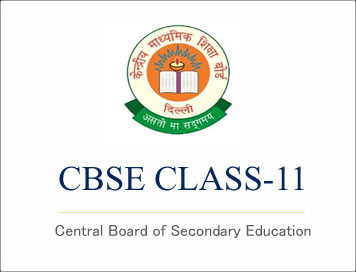CBSE Class-11 Syllabus 2019-20 (Informatics Practices)
Disclaimer: This website is NOT associated with CBSE, for official website of CBSE visit - www.cbse.gov.in
CBSE Class-11 Syllabus 2019-20 (Informatics Practices)
Learning Outcomes
1. Ability to identify the functionality of various components of Computer System.
2. Ability to develop application using simple python.
3. Ability to use, develop & debug programs independently.
4. Ability to store and retrieve data using an RDBMS.
5. Ability to understand societal, legal and ethical aspect of technology.
6. Ability to ensure safety and security in cyber-space.
Cource Structure :
| Unit No. | Unit Name | Mark | Period | |
| Theory | Theory | Practical | ||
| 1. | Introduction to Computer System | 5 | 3 | 2 |
| 2. | Introductory Python Programming | 30 | 45 | 35 |
| 3. | Data Handling | 10 | 20 | 15 |
| 4. | Data Management | 15 | 30 | 20 |
| 5. | Society, Law and Ethics | 10 | 10 | 0 |
| 70 | 108 | 72 | ||
Unit 1: Introduction of Computer System
Basic computer organisation: Computer system – I/O Devices, CPU, memory, hard disk, battery, power, transition from a calculator to a computer and further to smart devices.
Trouble shooting with parts of computer and basic operations of operating system Basic concept of Data representation: Binary, ASCII, Unicode
Unit 2: Introduction Python Programming
Familiarization with the basic of Python programming: a simple "hello world" program,process of writing a program, running it, and print statements; simple data-types: integer, float, string. Introduce the notion of variable, and methods to manipulate it (concept of L-value and R-value even if not taught explicitly). Tokens - keywords, identifiers, Literals, Delimiters. Knowledge of data type and operators: accepting input from the console, assignment statement, expressions, operators (assignment, arithmetic, relational and logical) and their precedence.
Conditional statements: if, if-else, if-elif-else; simple programs: e.g.: absolute value,sort 3 numbers, divisibility.
Notion of iterative computation and control flow: for ( range() , len()), while, flowcharts.
Suggested programs: finding average and grade for given marks, amount calculation for given cost-qty-discount, perimeter-wise/ area-wise cost calculation, interest calculation, profit-loss, EMI, tax calculation (example from GST/Income Tax).
List and dictionary: finding the maximum, minimum, mean; linear search on a list of numbers, and counting the frequency of elements in a list using a dictionary.
Text handling: compare, concat, and substring operations (without using string module).
Introduction to Python modules: importing math (sqrt, ceil, floor, pow, fabs), random (random, randint, randrange), statistics (mean, median) modules.
Click Here To Download Full Syllabus (Informatics Practices New)
Courtesy: CBSE
